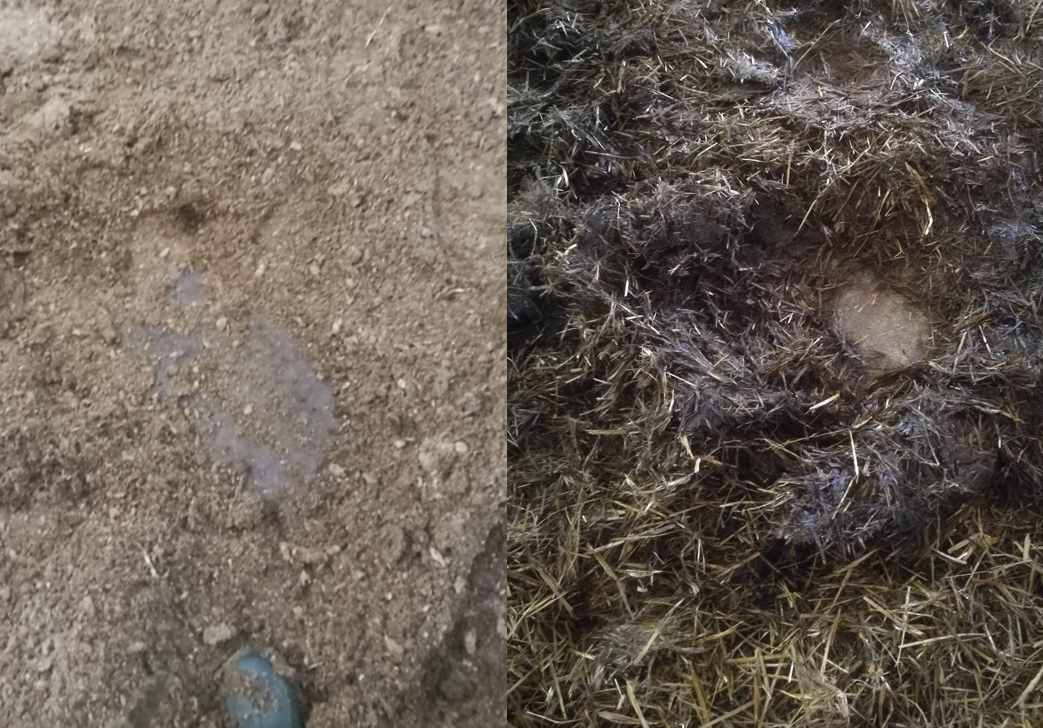One point of interest in 4dBarn bedded pack area survey was the practicality and functionality of the area. A barn is a complex building, and transition cow facilities only a small part of it, but it is equally important to spend some time planning the area. That way you can avoid impractical and time-consuming solutions. We listed some of our own observations and the interviewed farmer’s practical experiences on what to consider when designing a bedded pack area. These can also be considered from the perspective of your own already operating bedded area; do you find points you could use in your own barn to make it more practical and labor efficient?

Simple routes for machinery
1. Routes
Plan smooth routes for cows and machines. Simple and easy-to-prepare routes make cow transfer easy and quick. Consider preparing work needed before emptying or adding new bedding; where to put animals during emptying, which gates to turn, are there equipment that needs to be moved out of the way of the machines, how and where is the bedding storage and where to put the dirty bedding. Emptying the bedded area takes longer if there is only miniloader in use or the preparing takes time. The routes need to be big enough for a telehandler or a tractor to make the work go on smoothly.

A thin layer of bedding on a slippery floor
2. Depth of the bedding
A straw or peat bedding layer under 15 cm deep may be slippery under cows because the hoofs slip on the concrete floor under the bedding. Sand or woodchips as a bottom layer prevent slipping and helps cows to stand up or lay down smoothly. The primary solution however is to build a deeper bedding area.

The bedding gets dirtier faster near the feeding table if there is no manure alley
3. Cleaning of the manure alley
There are many ways to clean the manure alley (scraping by hand, manure robot, manure scraper, occasional rinsing, and no cleaning). Automated manure scrapers are not recommended because the scraper may take the newborn calf away. That’s why some farms use manure scrapers only manually. Two of the survey farms had no manure alley in front of the feeding table. The bedding became dirty and wet first near feeding table and it is best to empty that area more often. Simply using more bedding in that area isn’t a good solution because the level of the bedding rises too much compared to the height of the feeding table.

Water trough may wet the bedding
4. Placement of the drinking troughs
Water troughs placed next to bedded area wet the bedding when cows drink or the toughs are cleaned. To prevent the unnecessary soaking of bedding it’s best to place the troughs so that cows can only drink from the manure alley.

A handling corner with a headgate (left), a gate to guide a cow to a corner (right)
5. A handling corner with a headgate
A handling place is important to be able to give, for example calcium for a cow safely and smoothly. Farms missing it had solved the problem by adding a gate to guide a cow to one corner.

Light fences (left), and a fence with a movable pole in the middle (right)
6. Fences inside bedded pack
If need to separate animals in separate groups it’s not recommended to build stationary poles inside the bedding area. When adding new bedding or emptying the area you have to circle around the poles and that takes too much time. Light fences in narrower areas can carry themselves and are light to turn to the sides. Heavier fences in wider bedding areas may need a pole in the middle. One farm had a pole in between two fences. A car tyre was attached to the bottom of the pole and that way the fences could be turned to the sides with a miniloader if necessary.

VIC 24/7 access to robot
7. VIC 24/7 access to robot
In fresh group cows can be easily observed and their health monitored than in a big milking group. When the cows are kept longer period in bedded area, it’s good to design a 24/7 route to robot. That way cows can go get milked independently also and you can spare labor time. The importance of calm and loose group is emphasized in bigger farms where the cows are moved to a big, (several AMSs) milking group. 3 farms out of 12 had a VIC 24/7 access to robot and they were very satisfied with it.
A bedded pack area may seem to be very laborious. By considering all the details you’ll get smooth animal traffic and effective emptying and filling of the bedding. Detailed planning in advance rewards you with a functional and practical bedded pack area!


